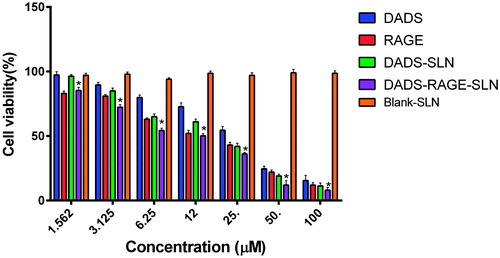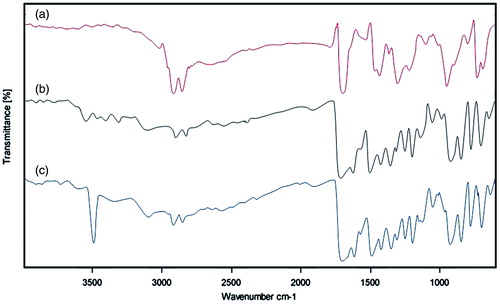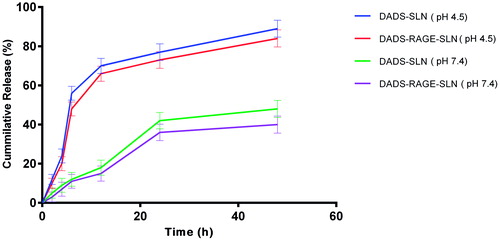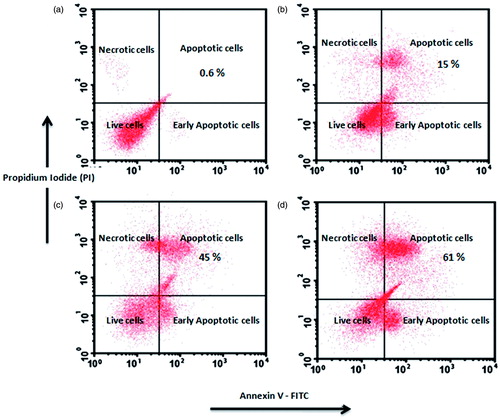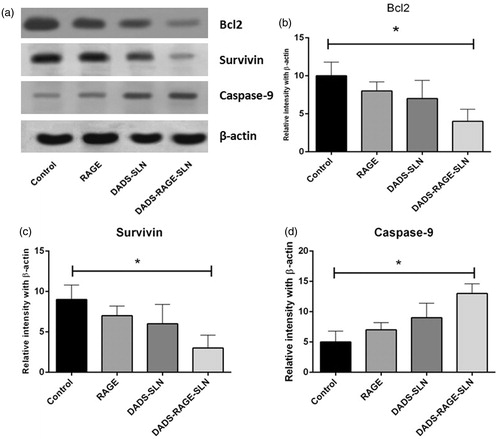Figures & data
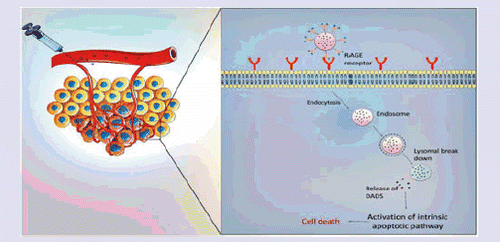
Table 1. Independent and dependent variables applied in experimental design.
Figure 1. Response surface plots showing the effects of lipid, surfactant and co-surfactant on particle size (a) and entrapment efficiency (b). Perturbation plot showing the effect of lipid, surfactant and co-surfactant on particle size (c) and entrapment efficiency (d).
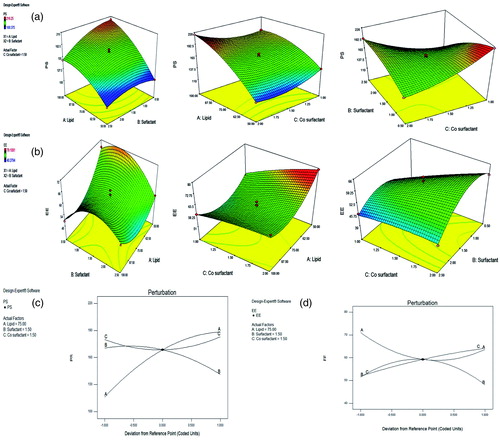
Table 2. Experimental batches and responses obtained for desired parameters.
Table 3. Analysis of variance (ANOVA) for response surface quadratic model (for PS).
Table 4. Analysis of variance (ANOVA) for response surface quadratic model (for EE).
Figure 2. Conjugation reaction between –COOH group of palmitic acid and –NH2 group of RAGE antibody.
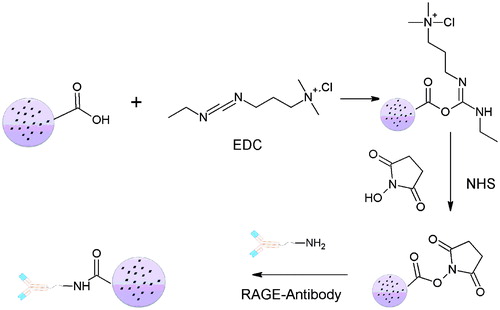
Figure 4. Particle size distribution of DADS-SLN (a) and DADS-RAGE-SLN (b); SEM (c) and TEM (d) of DADS-RAGE-SLNs.
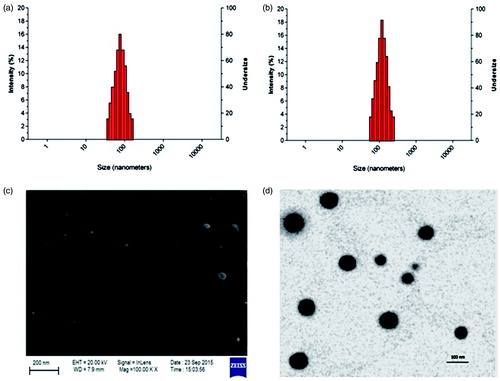
Figure 6. Qualitative (a) and quantitative (b) cell uptake of DADS-SLN and DADS-RAGE-SLN. The values are expressed as mean ± SD.*p < .05 vs DADS-SLN (n = 3).
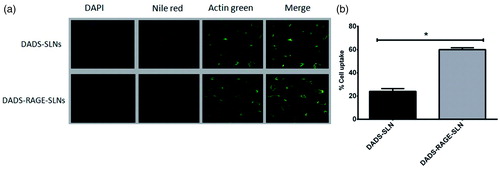
Figure 7. % cell viability after treatment with DADS, RAGE antibody, DADS-SLN, DADS-RAGE-SLN and Blank-SLN. The values are expressed as mean ± SD.*p < .05 vs DADS-SLN (n = 3).
